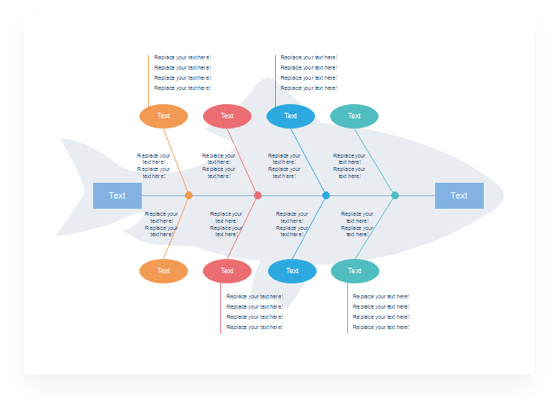

It is to discuss all the resources available to us for creating the finished product.

Machinery: Infrastructure is discussed when talking about machinery.Independent of the issue, common queries include: Is the labor force trained? Is the appropriate staff chosen for the position? Are the employees driven and eager to work? Does the employee demonstrate skill in his work? Manpower: We take into account all factors relating to people, employees, and labor.In fact, there are individuals who believe that talking about Ishikawa is equivalent to talking about the 6m and that there is life beyond the 6m, which in my opinion constitutes a failure in teaching and a waste of the Fishbone’s potential. The process of creating a Fishbone diagram most frequently goes like this.

However, we have the following graphics based on how we create a fishbone. We cannot claim that there are different kinds of Ishikawa diagrams there is only one sort of Ishikawa diagram.
#Ishikawa diagram maker online software
Quality Nugget: Creating Ishikawa (Fishbone) Diagrams With R ( Software Quality Professional) A fishbone diagram connects causal links in major categories with an outcome, or effect. The Quality Toolbox, Second Edition Articles Booksīusiness Process Improvement Toolbox, Second Edition You can also search articles, case studies, and publications for fishbone diagram resources. The resulting diagram illustrates the main causes and subcauses leading to an effect (symptom). Start using the fishbone diagram template and analyze process dispersion with this simple, visual tool. "Iron tools" can be considered a "Methods" problem when taking samples or a "Manpower" problem with maintenance personnel. "Calibration" shows up under "Methods" as a factor in the analytical procedure, and also under "Measurement" as a cause of lab error. Note that some ideas appear in two different places. Layers of branches show thorough thinking about the causes of the problem.įor example, under the heading "Machines," the idea "materials of construction" shows four kinds of equipment and then several specific machine numbers. The team used the six generic headings to prompt ideas. This fishbone diagram was drawn by a manufacturing team to try to understand the source of periodic iron contamination. When the group runs out of ideas, focus attention to places on the chart where ideas are few.Layers of branches indicate causal relationships. Continue to ask "Why?" and generate deeper levels of causes. Write sub-causes branching off the causes. Again ask "Why does this happen?" about each cause.

Causes can be written in several places if they relate to several categories. Ask "Why does this happen?" As each idea is given, the facilitator writes it as a branch from the appropriate category.


 0 kommentar(er)
0 kommentar(er)
